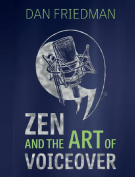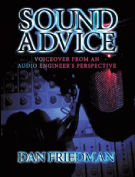Recording Magazine sends out a newsletter to its subscribers every few weeks. The newsletter is (coincidentally) titled “Sound Advice” and this month it features the seventh in a series about room acoustics. Room acoustics is one of the biggest concerns for Recording Magazine readers. I know that this is also a big issue for those of you in the voiceover world. I asked permission to reprint this newsletter (and will ask to reprint the others in the series as well) so that those of you with home studios can also benefit from the information. I want to personally thank Brent Heintz, VP/Associate Publisher for granting permission, allowing me to share this great information with you.
Please visit Recording Magazine‘s website and Facebook Page.
Catch up or skip ahead: Part 1, Part 2, Part 3, Part 4, Part 5, Part 6, Part 8.
Here is the seventh newsletter in the series on Room Acoustics:
Welcome to Sound Advice on Acoustics! Last time, we talked about how the timing and placement of sound waves reflected off surfaces in a room can play with our perception of how loud they are, what their tonal quality is, and where they’re coming from. Now that we have a grasp of the problem, it’s time to get it under control so our control room can provide an honest representation of what is coming from our loudspeakers.
One obvious and successful approach is to deaden reflective surfaces by placing absorptive material on them, eliminating problematic reflections. Since we’re concerned with mid and high frequencies here, with relatively short wavelengths, the familiar foam sheets and fiberglass-filled acoustic panels that we often see in studios are readily available and very effective. These can be hung or affixed to walls and ceiling to damp reflective surfaces. As noted earlier, a completely absorptive room would sound unnatural and be unsuitable for any musical application, so the solution is to apply only as much damping as needed to eliminate the most problematic reflections, while allowing enough reflections to remain to give the room an appropriate sense of “liveness.”
Again, the most problematic reflections are the earliest and strongest, coming from reflective surfaces closest to the source. In a control room, if the source is the speakers, this would be the walls and ceiling in the front and front-sides of the room. Reflections from the rear, having traveled a greater distance, would be weaker and, since they arrive much later than the direct sound, will not cause excessive coloration. As a result, they could be allowed to contribute to the necessary ambience in the room. If these rear reflections were further diffused for a more even distribution throughout the room, as described above, that would achieve the best balance while preserving the neutrality at the primary monitoring position (the “sweet spot”).
This approach is often described as LEDE™ (live-end/dead-end), a term and concept introduced by industry veteran Chip Davis (the trademark is held by Synergetic Audio Concepts, Inc.—www.synaudcon.com). Early applications of this technique completely deadened the front of the room (front wall, side walls, ceiling, except of course the control room window), as far back as the mix position. The back of the room was left live and diffused.
Damping the earliest reflections this way increases the initial time-delay gap, the time between the direct sound and the first of the early reflections which determine the acoustic character of the room. Increasing this gap in the control room allows for early reflections in recordings to be heard more clearly, without the control room imposing its own acoustic signature on everything played in it.
The approach works well, providing a lot of clarity at the monitoring position, but can sometimes result in good but slightly dry-sounding spaces. Some modern approaches tend to use a bit less absorption in the front of the room, damping some reflections and redirecting others away from the sweet spot toward the back of the room, where they can be diffused. If done well, this can provide a somewhat more “live” environment while still maintaining the essential clarity.
In a low-budget situation you can target the most problematic early reflections and damp them down even without benefit of the computer programs the pros use for this. You’ll improve clarity without excessive cost or analysis. This can be done by using the “mirror trick” we mentioned last time; here’s how it works.
One person sits in the mix position, while another takes a mirror and moves it around a side wall until the person sitting in the sweet spot can see the speaker on that side of the room reflected in the mirror. This shows the path of a sound originating at the speaker, and reflecting from that spot directly to the listening position, based on the “angle of incidence” rule we learned last time. Remember, light reflects just as sound does, so if you can see the speaker in the mirror on the wall, sound from the speaker will bounce off that spot on the wall and hit your ears!
Applying appropriate damping to that spot on the wall will eliminate (or at least reduce) an early, strong, and most likely problematic reflection. You do the same for such reflective locations at both side walls, ceiling, and even the floor. This isolates the most direct and strongest reflections, and damping them can make a noticeable improvement in clarity at the monitoring position, without overly deadening the room.
Flutter echo is another related problem that arises from reflected sound, especially from lateral reflections: A sound wave hits a parallel wall straight on, and (again, in accordance with the “angle of incidence” rule) reflects straight off and over to the other wall, setting up a repetitive back and forth reflection pattern that can result in an audible metallic “ringing.” As with room modes, splaying the walls to avoid parallelism can prevent this, but so will effective damping, as per above, and damping is certainly easier to implement than wall splaying.
Next time, we’ll consider what’s going on at the back of the room, and consider the problem of reflections off your mixing console. We’ll also discuss what using closely-aimed monitors buys you (and doesn’t). See you then!
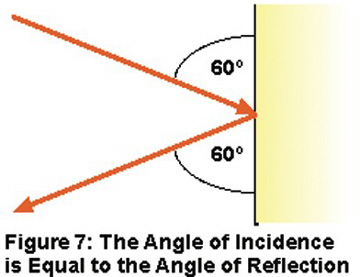
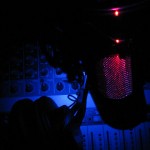 From a whisper to a scream, Bill Thomas could do it all. There are few voices that are as big and booming and yet still as versatile as was the voice of Bill Thomas. There are even fewer people left in this industry who have the knowledge, perspective and technical skill that Bill possessed.
From a whisper to a scream, Bill Thomas could do it all. There are few voices that are as big and booming and yet still as versatile as was the voice of Bill Thomas. There are even fewer people left in this industry who have the knowledge, perspective and technical skill that Bill possessed.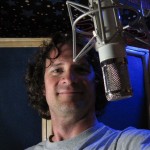 Last Friday I found out that I won
Last Friday I found out that I won 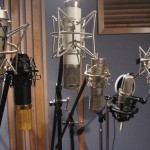 There is a lot of talk about mic modelers in social media today. A while back, I was asked the question in regards to
There is a lot of talk about mic modelers in social media today. A while back, I was asked the question in regards to 
